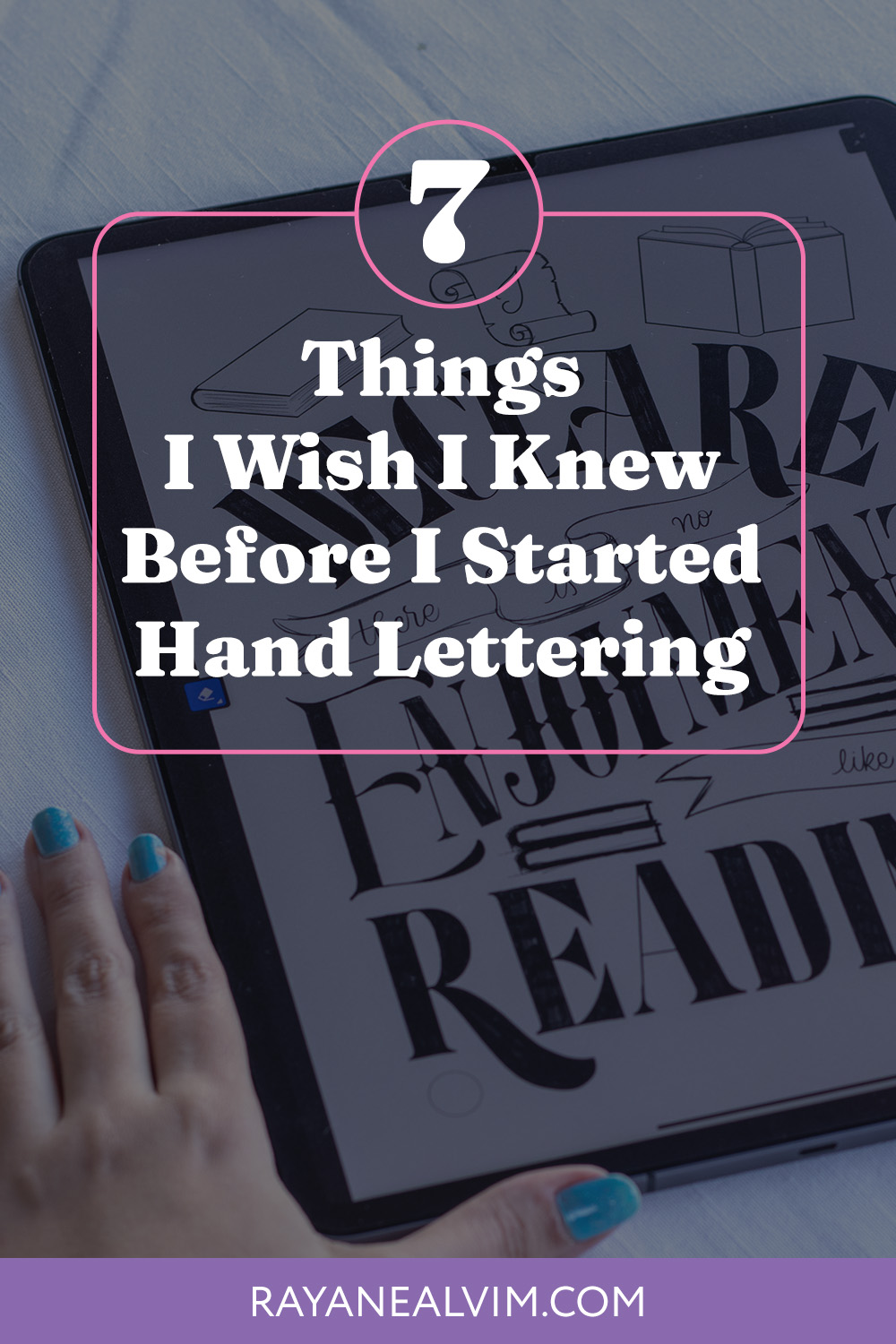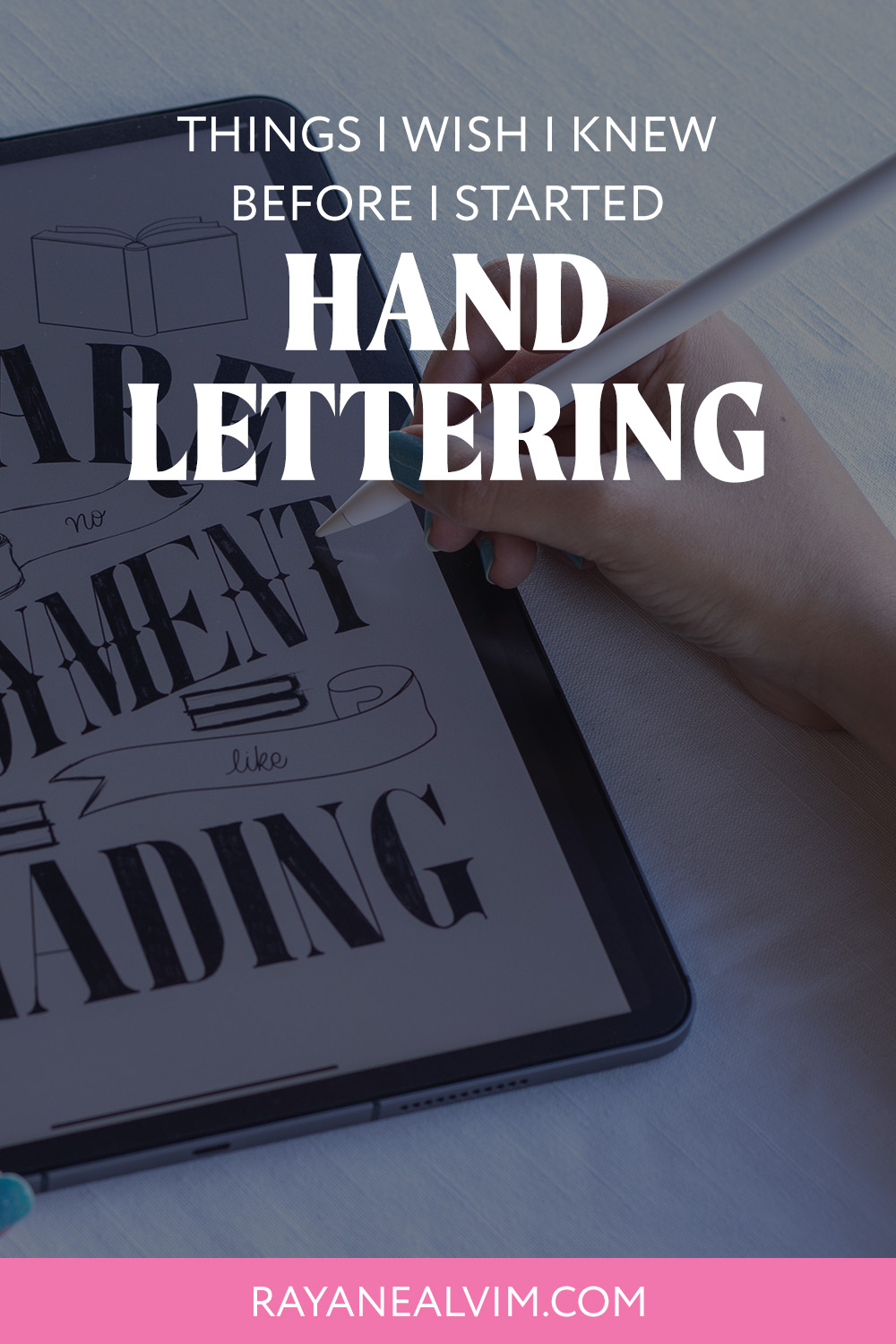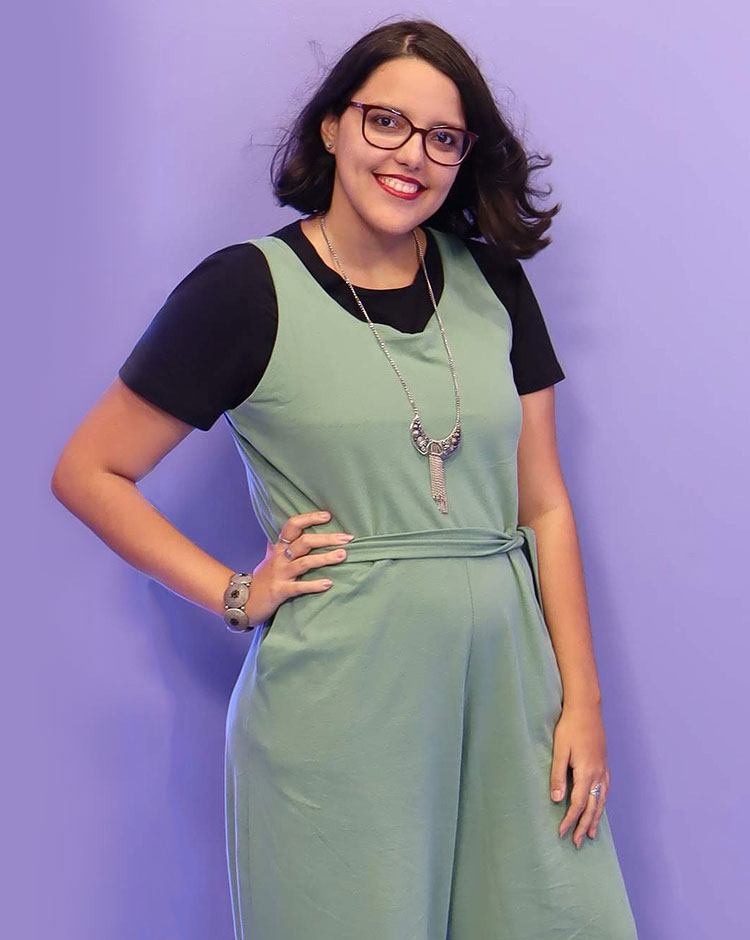When I started hand lettering, I didn’t have an exact plan for how to practice. I was inconsistent with it – sometimes I would practice for days and other times I would simply not even pick up a pen for weeks or months at a time.
I was also so anxious that I skipped ahead on my practice: I wanted to start creating words and quotes right away before I even knew all the basics. That was a huge mistake.
In this article, I’ll share everything I wish I knew before I started hand lettering so you don’t make the same mistakes I did when I was just starting out.
Note: This post contains affiliate links, which means if you happen to purchase something, I’ll make a small commission at no extra cost to you! See my full disclosure here.
The 7 Things I Wish I Knew Before I Started Hand Lettering
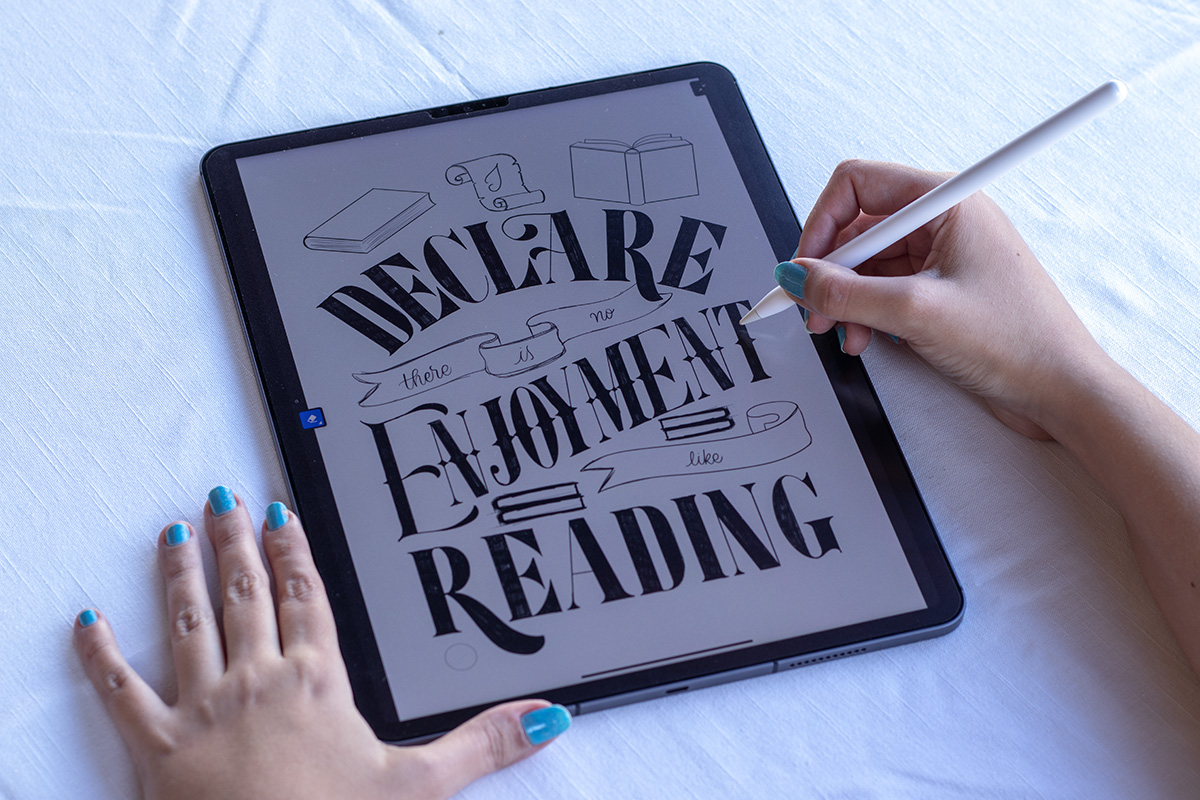
1. 15 Minutes of Practice a Day is Better Than Nothing
I used to think I needed to draw letters for hours and hours each day. Obviously, that isn’t realistic for most people. So most days I would just skip practice because I thought I needed more time. While in reality, it’s better to practice a little every day (or every few days) than to practice for hours just a day during one month.
If you’re only practicing for a day or a few days in a month, you’re being inconsistent. Whereas if you’re drawing lettering for even just 15 minutes a day, during more days in the month, you’re being much more consistent and you’ll progress faster – even if you don’t see it, which leads me to my next point…
2. Your Progress Won’t Always be Visible
A lot of the time during the beginning of my lettering practice, I thought I was stuck and not making any progress. You’re going to feel that way several times during your journey. Remember that often what we think is not always true. Your progress may not be visible right now, but in a few months – and especially in a few years – you’ll see how much progress you’ve made.
I know it’s easier said than done but you need to trust the process. If you keep practicing constantly, you’ll inevitably get better at lettering. Just so you can see how I started, here’s one of the first lettering pieces that I made:
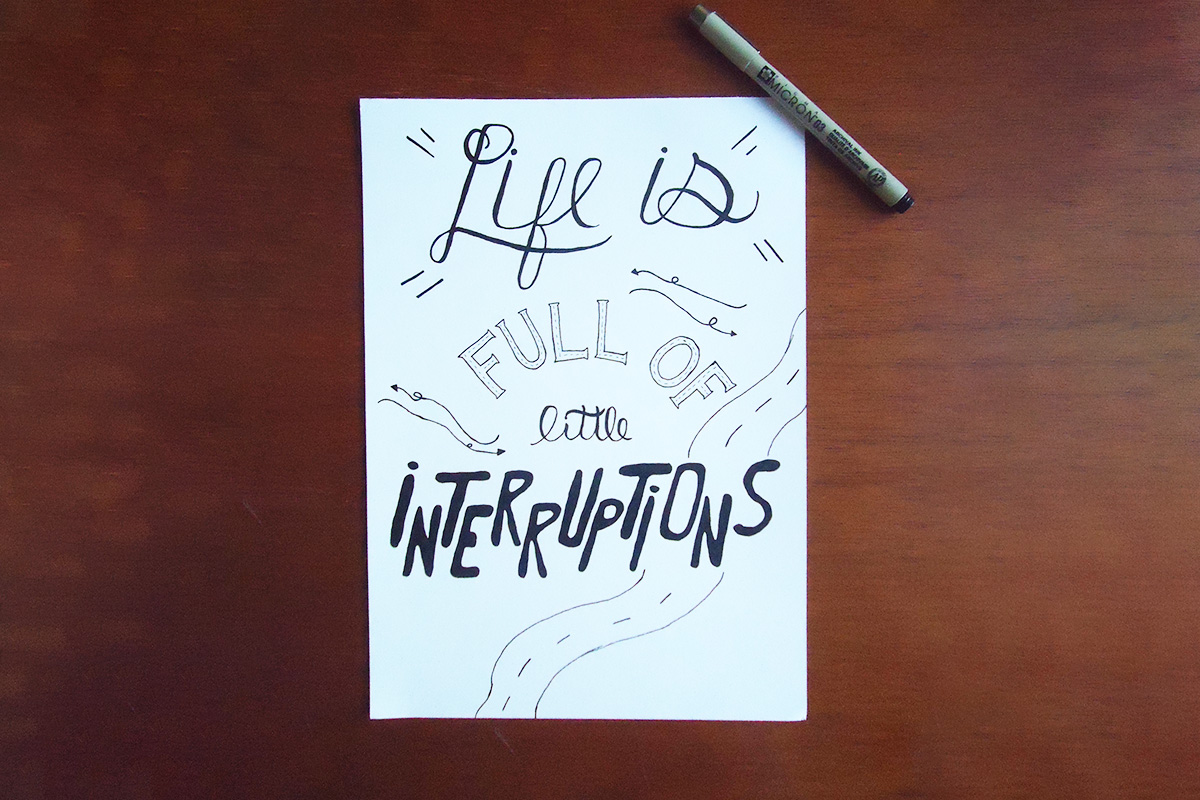
Just terrible, right? I know. It’s embarrassing to even look at my old “work” (if I can even call that work since I was just doing it to learn). Now look at one of my latest lettering pieces:
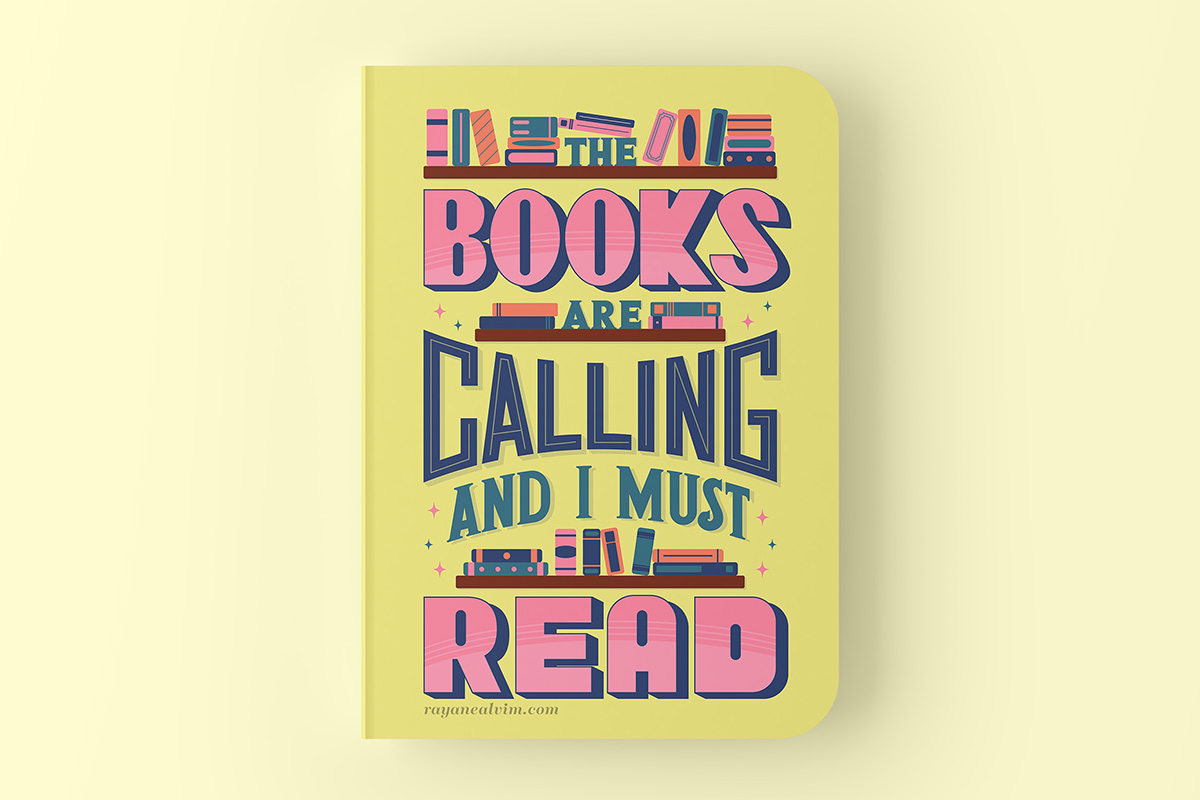
Do you see the difference now? I’m much more confident in my work, I’ve practiced a bunch and now I feel like my lettering is pretty solid. That’s what years of practice can get you. And you’ll get there as well. (I know it may sound discouraging when I say “years of practice” but I’ve been doing lettering before I even knew this would lead me to a career path, and now here I am teaching you how to practice too).
3. You Need to Really Pay Attention to Typography
While my interest in lettering came from my passion for typography (I pretty much have always been obsessed with it), I didn’t actually start paying close attention to each letter until I started practicing hand lettering.
If you take nothing else from this post, I hope you take this: take the time to learn typography. I’m not saying you should get caught up in the technical terms such as kerning, x-height, baseline, serif, descender, etc (although learning the basics of type anatomy will also benefit you).
I’m talking about really paying attention to every letter. Print out entire alphabets (especially classic fonts) from different styles and learn from them. Trace over the whole alphabet and learn about their differences. What makes a good sans serif letter “A”? What makes a good “S”? If you really want to learn lettering, studying typography is essential.
4. Comparison Truly is the Thief of Joy
In the early stages of my lettering practice, I would compare myself to other lettering artists. Mind you, I was comparing myself to artists and designers who had years of experience over me. We often compare ourselves to people who have been in the game longer than we have. We forget that we all have different backgrounds, are from different countries, have gone to different schools, have different learning styles, and much more.
We also forget that we mostly never see someone’s low. Be honest, would you rather share about your successes or your failures? While I’ve seen artists be way more transparent nowadays, we still only get a glimpse of their lives on social media. We see much more highlights than lows. It isn’t smart to compare yourself to people ahead of you. It’s smarter to compare yourself to your past self.
How have you improved in the last few months? Have you experimented with new stuff? Have you been practicing consistently? Ask yourself and check your progress once in a while. You’ll be surprised to look at your old work and check how much better you’re at it now.
I know this is another thing that’s much easier said than done. And I’ve been guilty of doing that for years. But I’m much less prone to let it paralyze me now. As soon as I realize I’m trapped in the comparison game again, I quickly put a stop to it. I know that comparing myself to others won’t get me anywhere and will only lead me to stop creating new art.
5. The Importance of Layouts and Compositions
When I was learning lettering, I wanted to create beautiful compositions and layouts. But I also didn’t immediately pay attention to what made a composition great. I began drawing quotes without putting much thought into any of my compositions.
It wasn’t until I began looking more carefully at different types of layouts and compositions that I really started to see some improvement in my lettering compositions. I encourage you to look at how other artists tackle layout and composition so you can start learning more about it. Obviously, I’m not saying you should copy a layout entirely, but you can get inspiration from other lettering artists and even from other fields as well.
If you’re a total beginner, I would recommend using Stefan and Ian’s Grid Builder to help you with your compositions. You don’t have to always use it, but it was something that helped me get started. Now I don’t use it as much, but I sometimes I’ll take a look at the shapes to give me a boost of inspiration until I come up with my own layout.
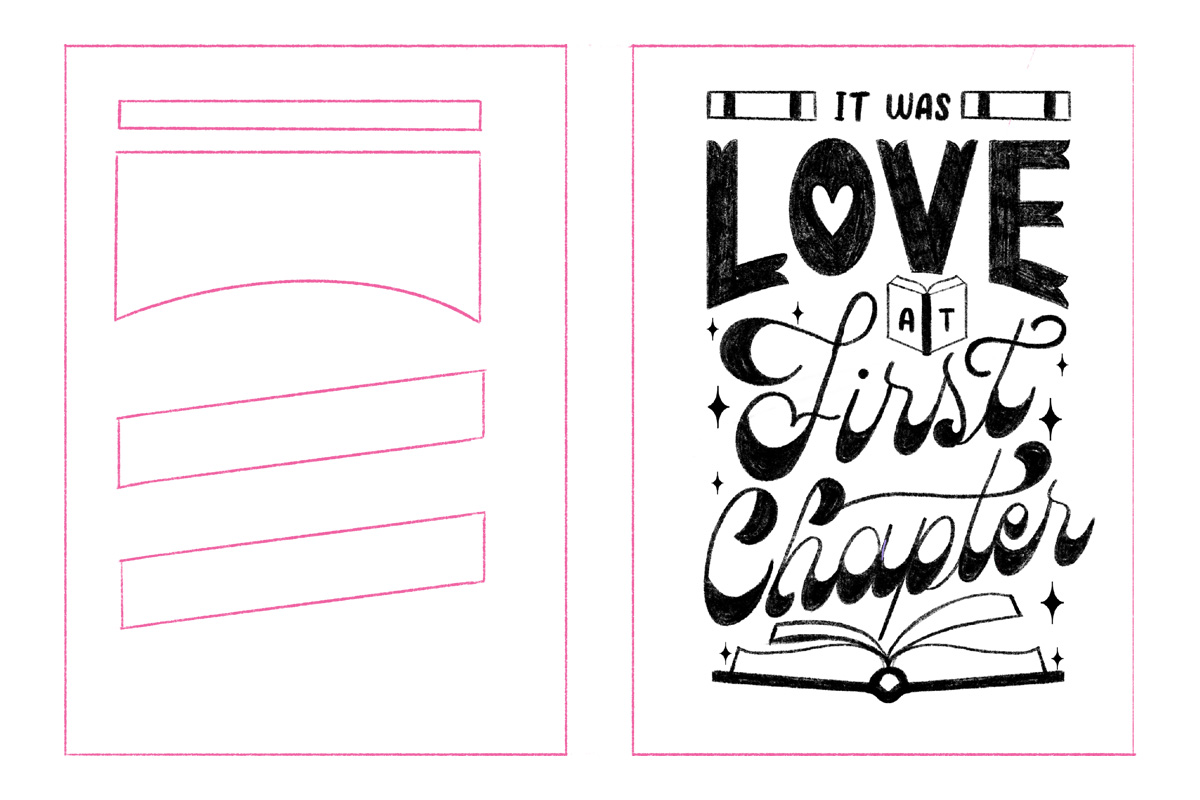
6. Your ‘Good Enough’ Now Won’t be the Same in a Year
I started sharing my work online when I thought my work was good enough to be published. Now I look back at my first few posts on Instagram and I see how much progress I’ve made with my lettering. I went from making mostly brush lettering to more complex lettering (and combined illustrations) such as my Bookaholic project.
This is to prove to you that when I started my journey, I believed my work was good enough. Now I look at it and see how much I can improve on things I’ve made back then. If you’re embarrassed by your older work, then that means you’re doing something right and you’re actively improving! So the work that you made a year, or a few years ago, will probably not be ‘good enough’ for the standards that you have today.
7. Focusing on Quantity Instead of Quality is Better at First
We are artists and quality matters so much to us. Sometimes what’s in our head doesn’t translate well into paper, especially when we’re in the beginning stages of learning a new skill as niche as lettering. Because of that, we often feel like our work isn’t good. In the beginning, you should focus on making more work instead of focusing on the quality of the work you’re producing.
I didn’t realize this while it was happening, but in the early stages of my lettering journey, I participated in a few Instagram challenges, which made me create work every day without being too precious about it. I would create one lettering, photograph it, and then share it on social media. The more you create without having the fear of it not being perfect, the more you’ll want to create and the more you’ll improve.
When you’re a beginner, you’re not as cautious about your work as when you’re more experienced. I would even argue that I was more fearless about creating lettering when I was just beginning – I would experiment without the fear that something was wrong with my letters. After all, I was just a beginner, what did I know? Whereas right now, I’m more conscious of everything simply because I know more.
It’s kind of weird because the more you know, the more you’re aware of things that are “wrong” with your work. Your taste in things also changes because you’re more experienced and you have more baggage now. I believe this is why some people say that you have to approach things with a beginner’s mindset. When you’re a beginner, you’re more open to trying new ideas and less afraid of making mistakes.
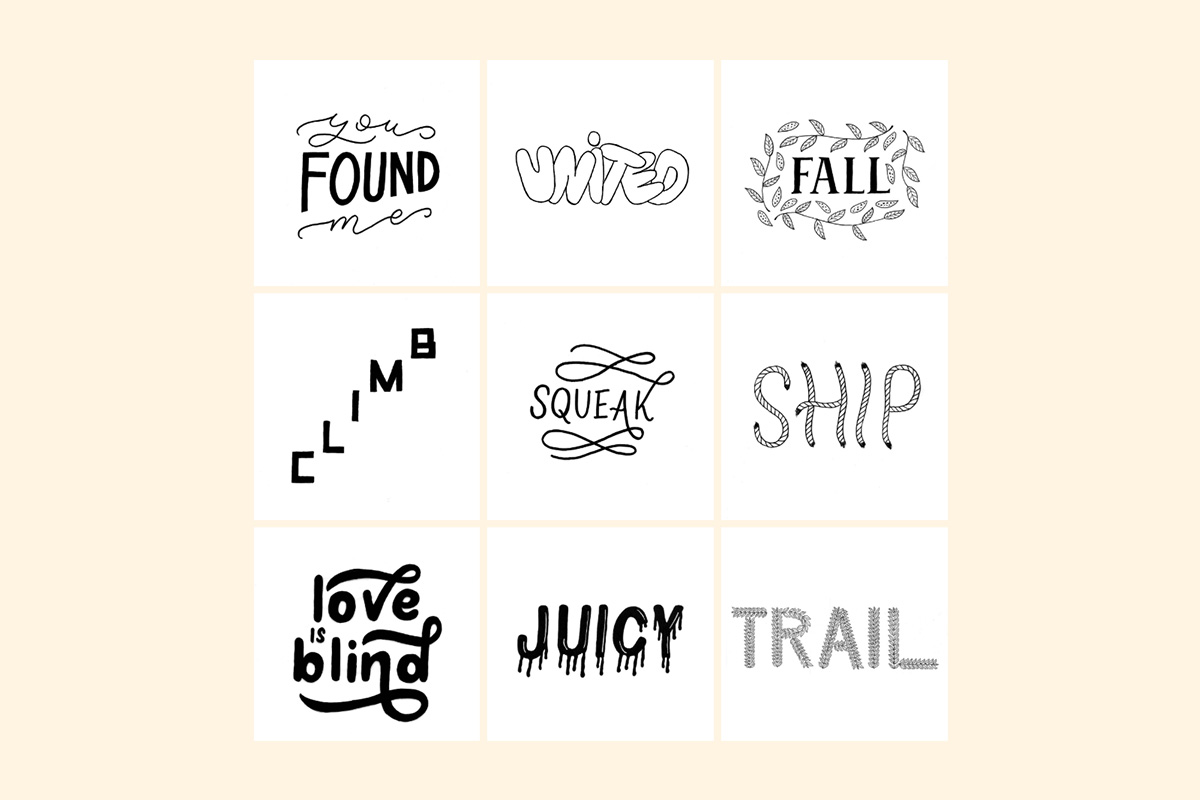
Conclusion
I know we hear a lot about consistency these days, but it’s unfortunately the truth. But you don’t have to be like “If I don’t practice lettering every day, I won’t be any good”. You can practice three days a week for 15 minutes. You can practice 2 days a week for half an hour.
Find what works best for you and go for it. It’s better to practice a few times than none at all (which is what ends up happening sometimes). And most of all, have fun in your learning journey. I think the most important thing here is movement. If you keep moving, things will undoubtedly improve for you.
✨ Pin It For Later ✨

